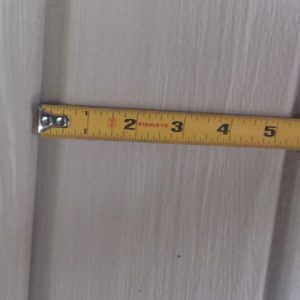Range hood through siding with vertical grooves.
I am in the process of adding a range hood above my stove. The stove is on an exterior wall so the plan is to go straight out using shortest path possible. The exterior siding has vertical grooves about 3/8″ deep and 1/2″ wide (see attached photo). Will this be a problem with regards to water getting behind the siding? Is there a method/product that will help me achieve this? Thanks in advance for any recommendations!




















Replies
Owner style fix: Block It. In otherwords, the simplest method is to cut out a square area of the siding bigger than the vent. "Slip" some window header drip flashing up behind the top cut and any weather barrier. Caulk the under portion of the flashing to the wall and at each end. Create a corresponding block with the vent hole that fits this square hole in the siding. Even slope the top edge and give the bottom edge a drip cut. Prime all sides, even prepaint all sides. Caulk the heck out of it and the vent passing through it. This shouldn't be a high heat situation so a high-quality paintable silicone infused caulk will work. Think of this as a layman's wall boot, much like a vent boot on the roof. Be creative and create a decorative block if this is in a highly visible place.
The description sounds like T1-11, which is often slapped up directly on the framing- it's both sheathing and siding- often with no water-resistant barrier, which introduces some complications. I agree with ktkcad's suggestions about flashing the top and sloping the top & bottom of the mounting block. If possible, I'd slope the vent duct to shed water too and I'd try to match the slope of the mounting block with sloped cuts in the T1-11 at the top and bottom of the square opening. (Yes, that's tricky, but you can see the benefit if you look at a vertical section from the top flashing, through the duct, down past the bottom cut.)
Remember that even premium caulking only lasts for 10 years, so, besides caulking the heck out of everything, I'd try to add flashing over the vertical joints on each side, starting under the top flashing, extending below the sloped bottom cuts. It's always a temptation to bend the outer edges of the top flashing down around the mounting block, but I think it's actually better to extend the upper cut 1/2" past the vertical cuts and leave the flashing straight- doesn't look as neat, but sheds water better, which is THE top priority. WKW- Water Kills Walls.
PS- dbischoff gets points for adding an actual vent over the stove- those recirculating range hoods are a crime against indoor air quality.